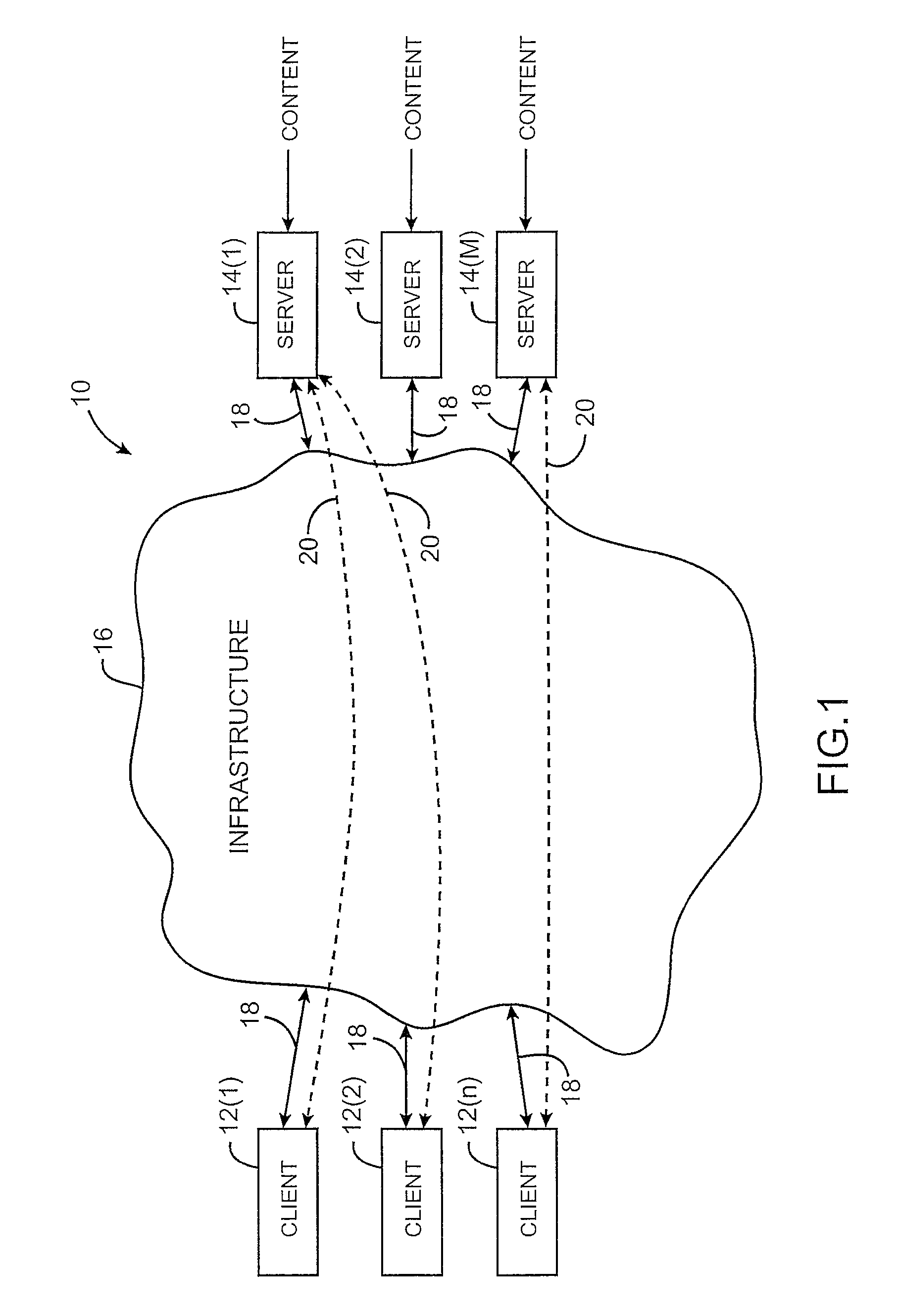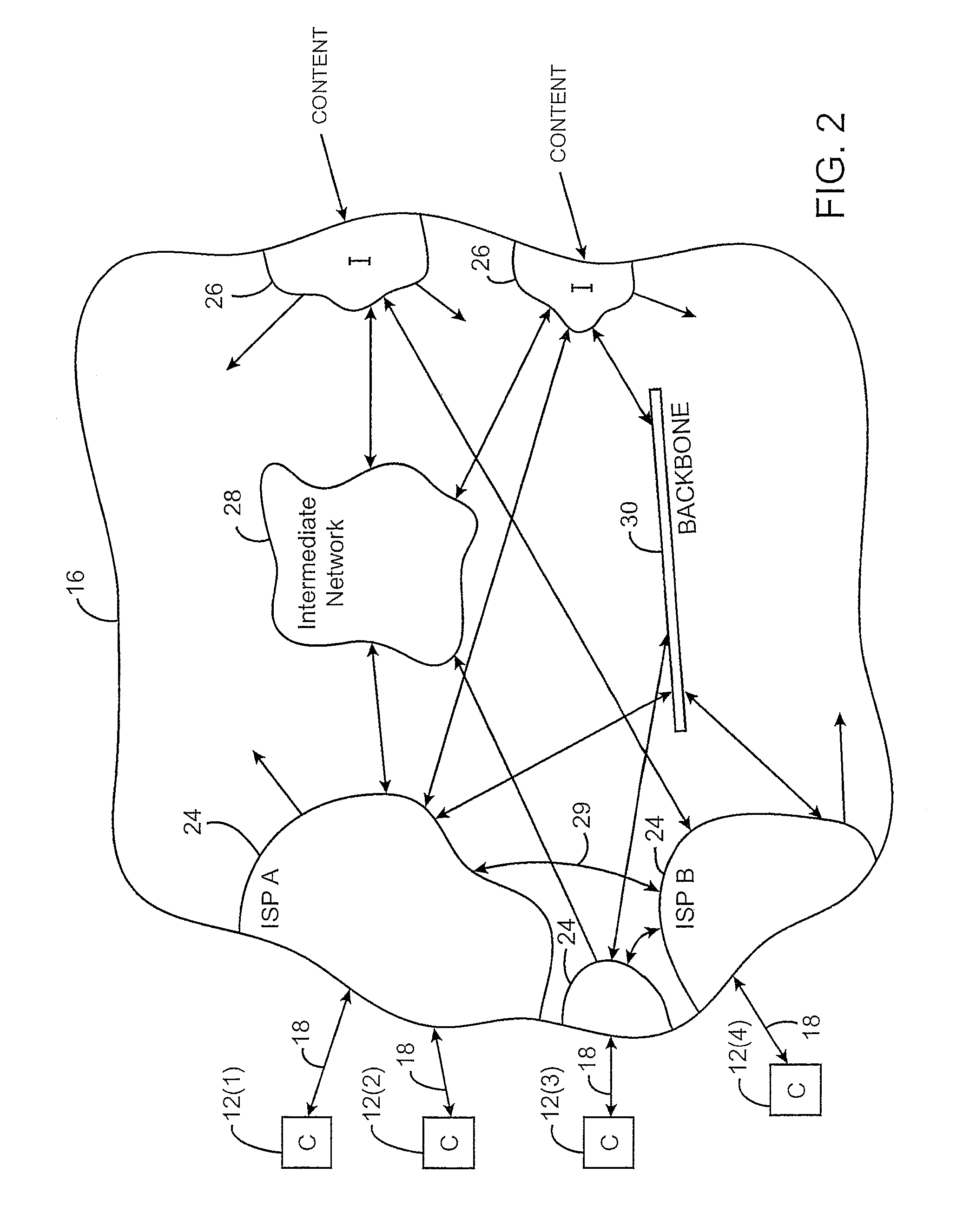Content distribution system for operation over an internetwork including content peering arrangements
a content distribution system and content peering technology, applied in the direction of data switching details, data switching networks, instruments, etc., can solve the problems of not being able to easily broadcast content over the internet (or any other internetwork or network being used), swamping the servers and computing infrastructure of the content provider, and not being able to achieve bandwidth-efficient flash effects
- Summary
- Abstract
- Description
- Claims
- Application Information
AI Technical Summary
Problems solved by technology
Method used
Image
Examples
Embodiment Construction
[0055]A few examples of specific embodiments of content peering architectures according to the present invention are described herein. Others may become apparent after reading this description and it should be understood that the invention is not limited to these specific examples, but is limited only by the appended claims. Furthermore, while specific methods and apparatus are shown, it should be apparent upon reading this disclosure that some of the methods can be practiced using different apparatus and the apparatus shown could be used to perform different methods than shown.
[0056]This description discloses how to make and use several embodiments of a system according to the present invention, but for brevity omits descriptions of many well-known components of such systems. For example, the operation and design of a standard TCP / IP network, standard TCP / IP clients and the like are not explicitly disclosed herein, as they well described in countless readily available sources.
[0057...
PUM
 Login to View More
Login to View More Abstract
Description
Claims
Application Information
 Login to View More
Login to View More - R&D
- Intellectual Property
- Life Sciences
- Materials
- Tech Scout
- Unparalleled Data Quality
- Higher Quality Content
- 60% Fewer Hallucinations
Browse by: Latest US Patents, China's latest patents, Technical Efficacy Thesaurus, Application Domain, Technology Topic, Popular Technical Reports.
© 2025 PatSnap. All rights reserved.Legal|Privacy policy|Modern Slavery Act Transparency Statement|Sitemap|About US| Contact US: help@patsnap.com



